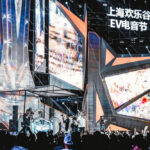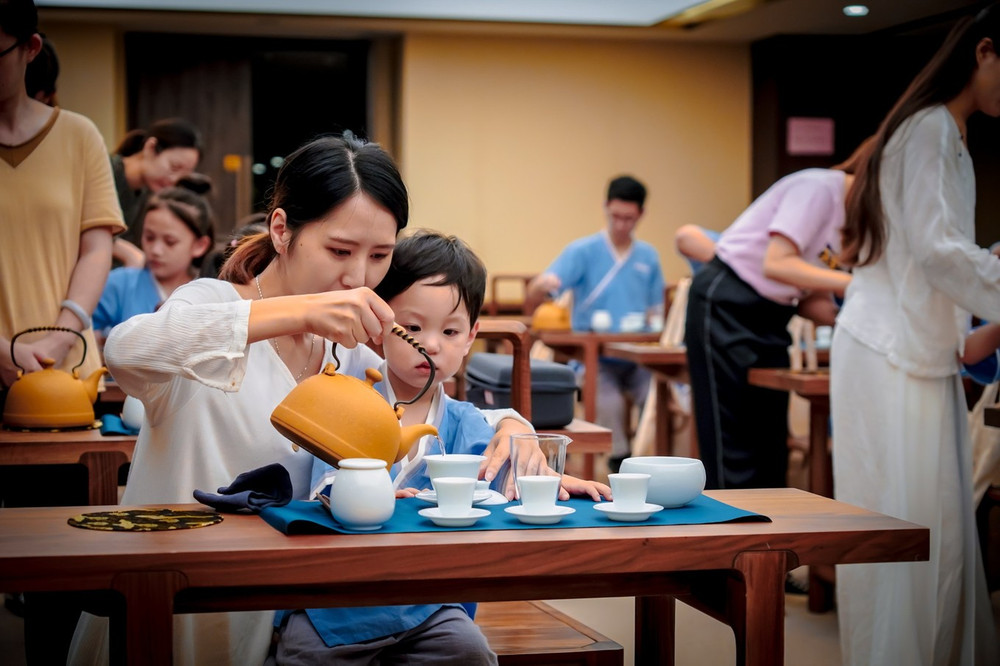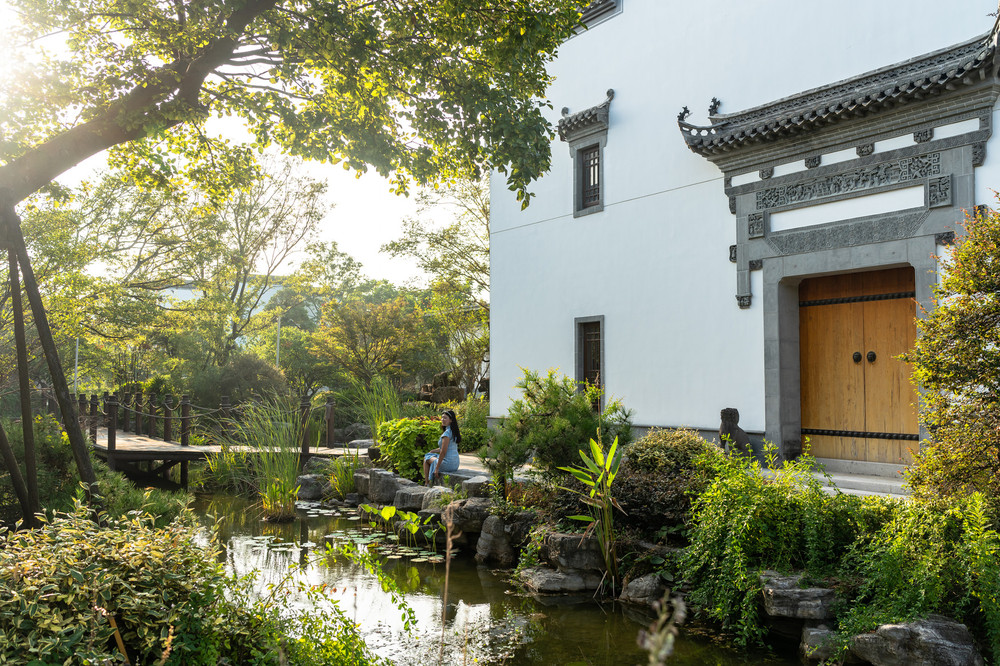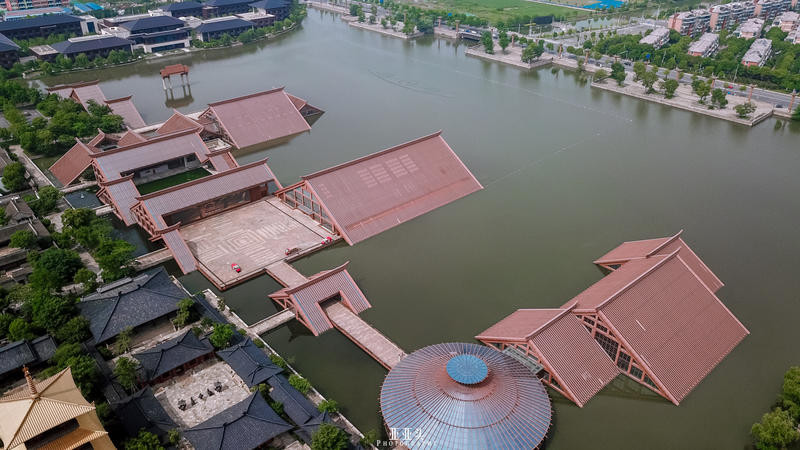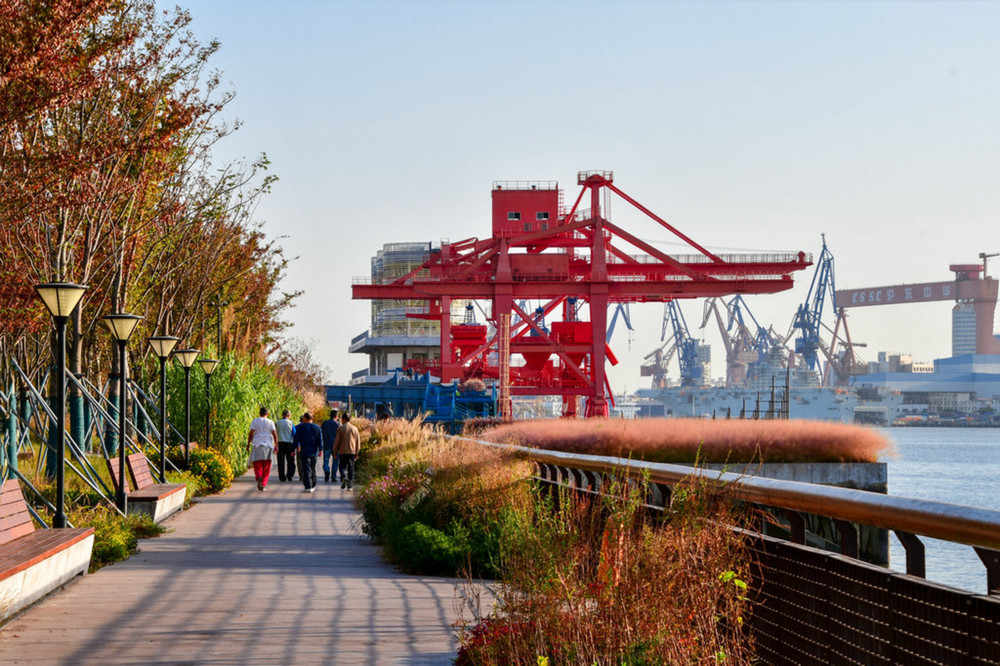Mount Song, nestled in Dengfeng City, Henan Province, is renowned as one of the ‘Five Great Mountains’ and stands as the birthplace of eight remarkable historical structures. These include the Dengfeng Observatory Platform, the Songyang Pagoda, the Zhongyue Temple, the Songyang Academy, and the Shaolin Temple complex, which encompasses the Chan Hall, the Pagoda Forest, and the Ancestor’s Temple. Spanning across the dynasties of Han, Wei, Tang, Song, Yuan, Ming, and Qing, these architectural marvels have collectively painted a vivid 2000-year architectural history of the Central Plains in China. This rich tapestry of structures represents one of the most enduring, diverse, and culturally profound ancient architectural ensembles in the nation. On August 1, 2010, the historical architecture group known as ‘The Center of Heaven and Earth’ in Dengfeng was inscribed on the ‘World Heritage List,’ marking it as China’s 39th World Heritage site.
‘The Center of Heaven and Earth’ Historical Architectural Group
The phrase ‘The Center of Heaven and Earth’ carries a profound significance. It invites us to ponder why the term ‘Central’ is used and why the vast Chinese civilization has historically chosen ‘the center’ for its capitals. To truly understand the essence of Mount Song, one must engage with the local woodcutters who hold the secrets of the mountain’s history.
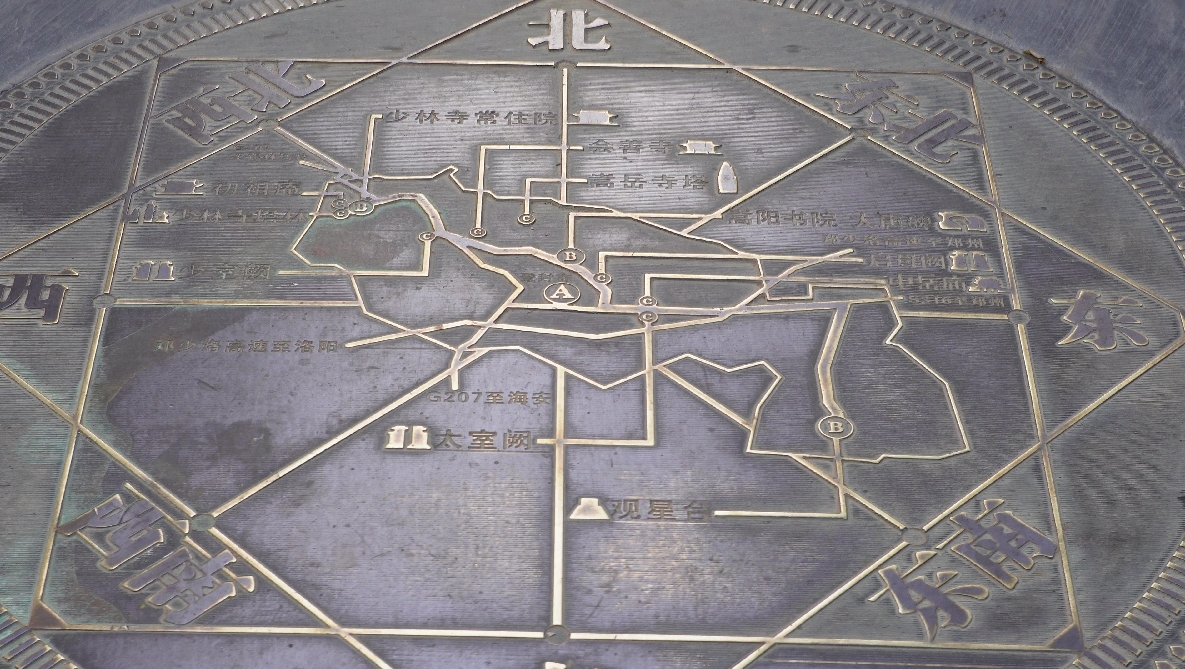
On September 26, amidst a moderate rain, esteemed poets, scholars, and guests partook in the 7th Chinese Poetry Festival, venturing to Mount Song to explore the Songyang Academy, the Shaolin Temple complex, the Zhou Gong Measuring Platform, and the Dengfeng Observatory Platform. Through these visits, they sought to experience the grandeur of ‘lofty Mount Song, the center of heaven and earth’ and to grasp the continuity, innovation, unity, inclusiveness, and peace that define Chinese civilization.
Visiting the Songyang Academy

The Confucian doctrine, with its timeless wisdom, has been revered by successive Chinese dynasties for millennia. It posits that ‘To govern a country, one must first govern his family. To govern his family, one must first cultivate his personal life. To cultivate his personal life, one must first rectify his heart. To rectify his heart, one must first be sincere in his intentions. To be sincere in his intentions, one must first extend his knowledge…’ On the morning of September 26, the group visited the Songyang Academy to delve into the relevance of Confucian thought in modern society.
The Songyang Academy

Confucianism has maintained a dominant position for over two thousand years, with Buddhism, Taoism, and other schools occasionally flourishing but never surpassing its influence. This is not a historical coincidence but a testament to Confucian thought’s alignment with societal needs and its subsequent societal endorsement. Despite the cool autumn wind and moderate rain, the insightful and profound explanations by Zhu Jianping, deputy director of the Tourism Service Center of Dengfeng City’s Culture and Tourism Bureau, provided a ‘spiritual feast’ for all.
Songyang Academy Inscriptions (partial)

Zhao Zhenjiang, a professor of Spanish at Peking University and a translator, shared in an interview with the Dahe Network that ‘Songyang Academy is located in ‘The Center of Heaven and Earth,’ and its special geographical location and cultural heritage have attracted many famous scholars to lecture here, giving birth to a multitude of philosophies. After visiting the Songyang Academy, I realized that my understanding of ‘Central Plains culture’ is far from enough, and books cannot fully express the profoundness and profound heritage of the Central Plains culture.’
It is said that all who talk and laugh are Confucian scholars, and none are commoners. The Songyang Academy is recognized as one of the earliest academies in China to disseminate Confucian Neo-Confucianism, to worship Confucian sages, and to hold examinations. It is also part of the eight historical buildings in the ‘The Center of Heaven and Earth’ historical architecture group in Dengfeng, one of the ‘Four Great Academies’ of the Northern Song Dynasty, a national key cultural relics protection unit, and named after its location on the sunny side of Mount Song. Historically, luminaries such as Fan Zhongyan, Sima Guang, Cheng Hao, Cheng Yi, Zhu Xi, and others have lectured here, volumes 9 to 21 of ‘Zizhi Tongjian’ were completed here, and the famous allusion ‘Standing in the Snow at Cheng’s Door’ also took place here.After the trip to Song Yang Academy, the interview team, accompanied by the emotional singing of the event guests along the way, arrived by car at the Shaolin Temple on Mount Song. Known as “the number one famous temple in the world” and “the cradle of Zen Buddhism,” Shaolin Temple on Mount Song has a rich history and cultural significance.
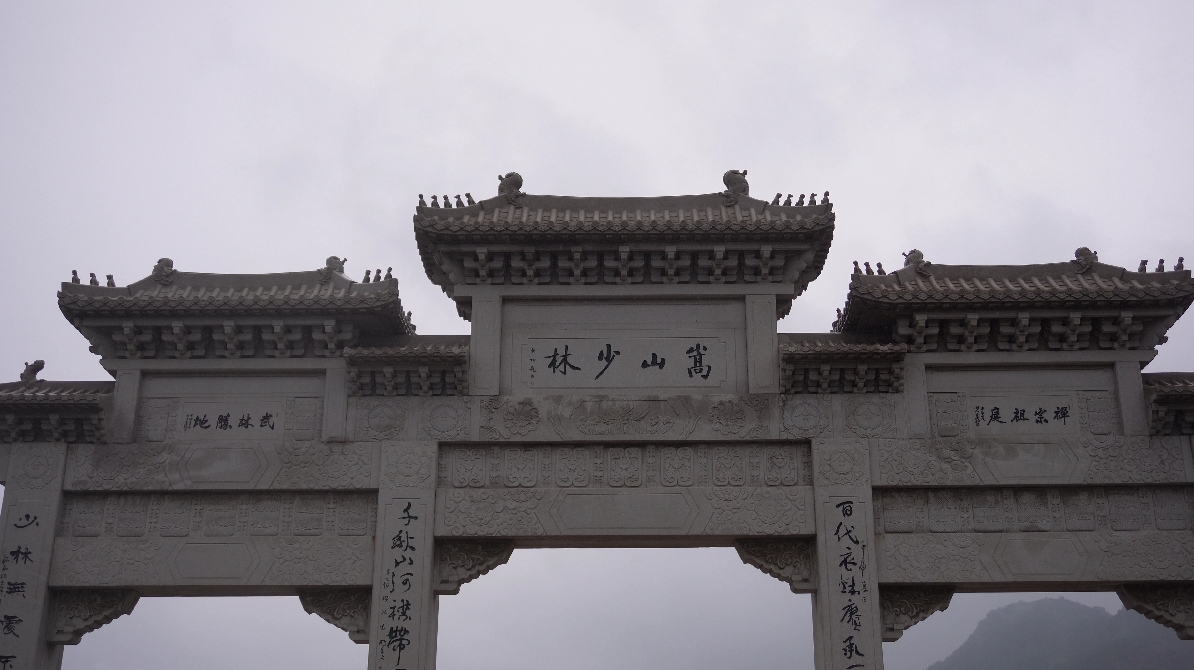
In 1982, the movie “Shaolin Temple” was released, garnering a box office revenue of 160 million yuan. This not only created a box office myth for that year but also propelled the Shaolin Temple to worldwide fame. The film allowed Chinese people to indulge in “knight-errant” fever and attracted many domestic and foreign tourists who hoped to witness the Shaolin style.
Most people’s understanding of the Shaolin Temple stems from that 1982 movie. The Shaolin boxing depicted in the film is vigorous and powerful, leaving a deep impression on viewers. However, after witnessing the “Baduanjin” performed by the Shaolin monks today, it’s clear that Shaolin culture is a blend of Zen, martial arts, and medicine. Shaolin martial arts are not just rough but also富含丰富的健康智慧. Chen Liwei, Vice Chairman of the Tianjin Writers Association, shared her visit feelings with a reporter from Dahe Net, stating that Shaolin Temple, renowned for its martial arts, does not advocate resolving issues through force. It is famous not only for its martial arts but also for its profound Zen and medical cultures. Shaolin martial arts, Shaolin Pharmacy… The characteristic culture of Shaolin Temple, integrating Zen, martial arts, and medicine, represents traditional Chinese culture and plays an irreplaceable role in cultural exchanges between China and other countries.
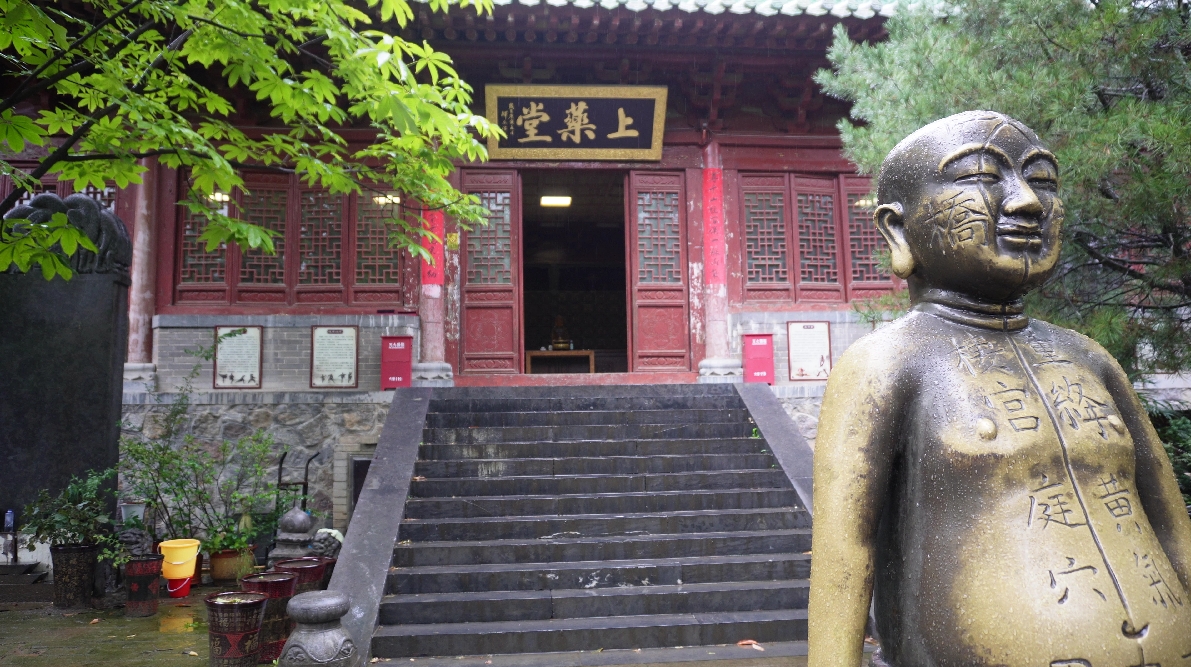
Beside the bell tower of the Shaolin Temple’s monastery, there stands a stone stele called the “Hunyuan Sanjiao Jiuliu Liu Tuzan.” While it may seem ordinary and unremarkable compared to other inscriptions and structures, this stele, located away from the central axis, reflects the profound cultural heritage of Shaolin Temple and its broad-mindedness in integrating the three teachings and uniting various schools of thought.
“The Hunyuan Sanjiao Jiuliu Liu Tu, also known as the ‘Harmony in One Group Picture,’ was created by Zhu Zaiyu of the Ming Dynasty and has a history of over 400 years. It is a symbol of Shaolin culture,” explained Shi Yan Ge, the librarian of Shaolin Temple and the person in charge of the New Media Center. The front of the stele depicts Buddha, with Confucius, the sage of Confucianism, on the left side, and Laozi, the founder of Taoism, on the right. The harmonious integration of Buddhism, Confucianism, and Taoism enriches and forms traditional Chinese culture. Such depictions of figures from different religions on the same stele are rare in the country, making it extremely valuable. In March 2006, the Hunyuan Sanjiao Jiuliu Liu Tu was made into a crystal carving and presented to Russian President Putin during his visit to Shaolin Temple.
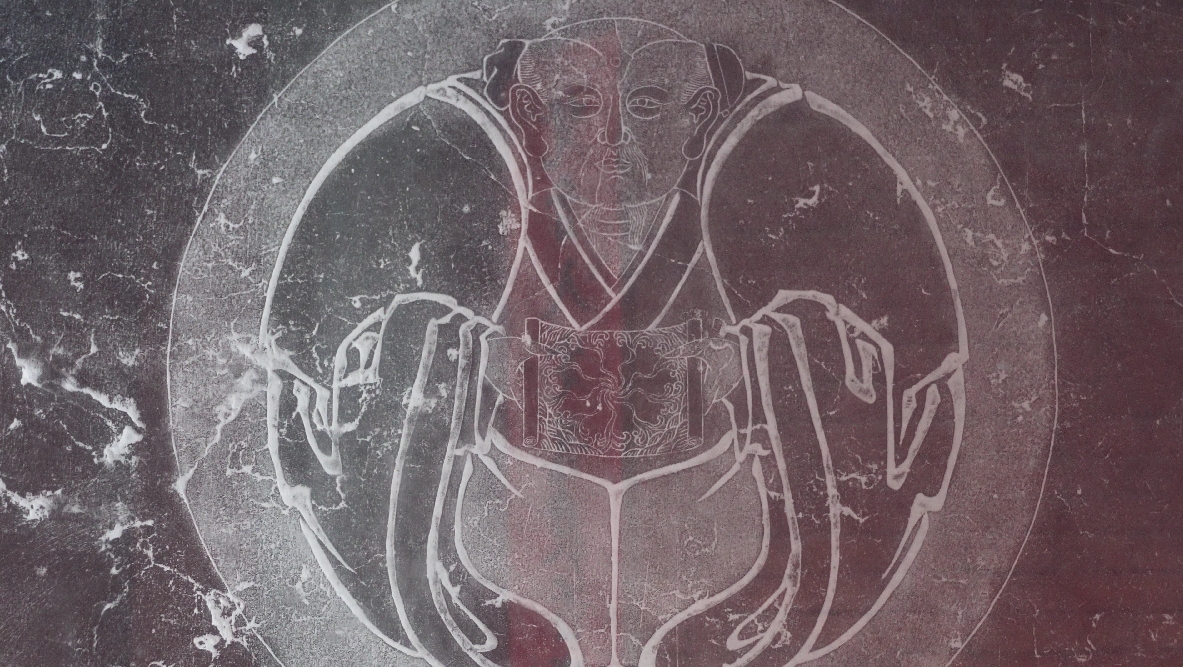
The brushwork of Zhu Zaiyu’s “Hunyuan Sanjiao Jiuliu Liu Tu” is smooth and harmonious, with a wonderful conception. It changes the layout of the “three teachings in opposition” and integrates the “three sages” into one, expressing the ancient Chinese concept of “three teachings in one body, nine streams from one source; all schools of thought under one truth, all laws under one principle.” This embodies the inclusiveness and grandeur of Chinese culture. The longevity of Shaolin Temple over a thousand years is not only due to its martial arts culture but also its broad-mindedness in integrating the three teachings and uniting various schools of thought.
Exploring the “High Platforms,” one wonders about the origin of the twenty-four solar terms and why Dengfeng is called the “center of heaven and earth.” It all began in the early years of the Zhou Dynasty when the Duke of Zhou, the fourth son of King Wen of Zhou, built a platform in Dengfeng to observe the changes in the sky, verify the transition of seasons, and establish the calendar. That afternoon, the group visited the Zhou Gong’s Shadow Measuring Platform and the Dengfeng Star Observing Platform to find the answers.
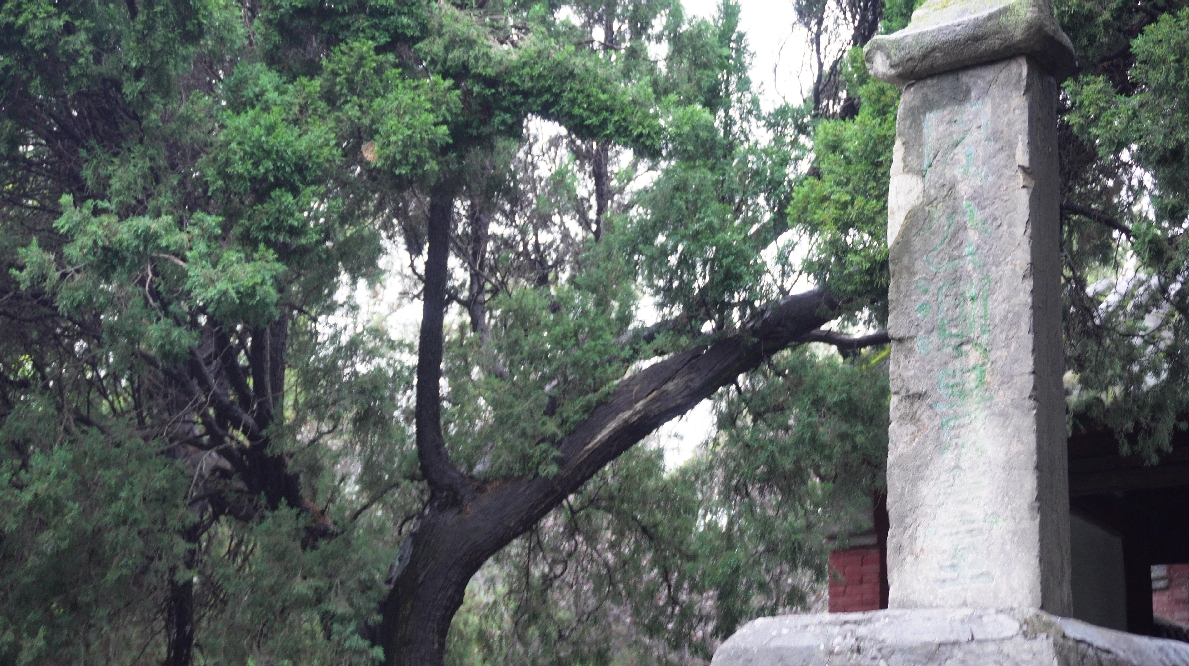
Zhou Gong’s Shadow Measuring Platform, located in the Dengfeng Star Observing Platform scenic area, is an ancient astronomical instrument used by the Duke of Zhou when he built the eastern capital of Luoyang in Dengfeng. It used the method of soil and wooden rods to measure shadows, determine the geographical center, and verify the changes of the four seasons. It is an important physical testament to the ancient Chinese astronomical legislation of measuring shadows and is the earliest existing astronomical observation building in China.
It was here that the Duke of Zhou used the method of measuring the depth of the soil with a gnomon to determine the true north, the position of the sun at noon, and the geographical center of the earth, confirming that Dengfeng was the “center of heaven and earth.”The cosmological view of the universe, with this place as the ‘center of heaven and earth,’ was established along with the recognition of the spring equinox, autumn equinox, summer solstice, and winter solstice within the twenty-four solar terms. This marked a brilliant prologue to the development of civilization. Zhu Jianping highlighted the significance of the Duke of Zhou’s measuring platform in the history of world science and architecture due to its unique value, which also serves as the most direct evidence of Songshan’s status as the ‘center of heaven and earth.’
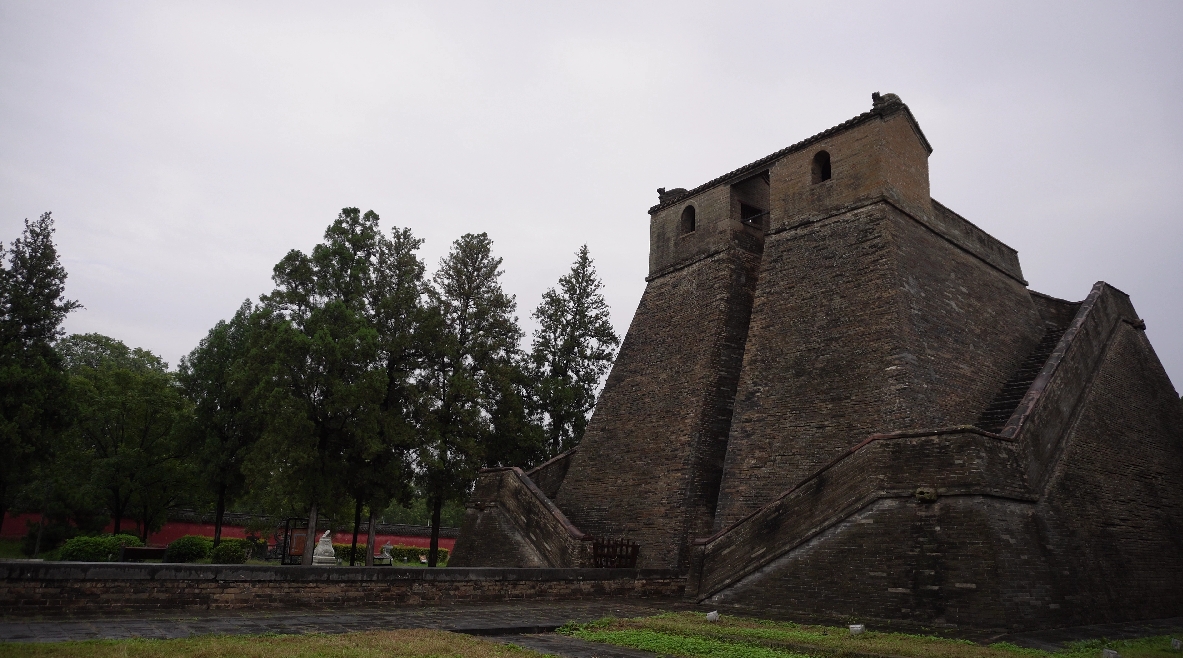
Astronomical Observatory
Beyond the Duke of Zhou’s measuring platform, Guo Shoujing’s decision to construct the Astronomical Observatory here further solidifies this claim. Under the guidance of astronomer Guo Shoujing, the observatory was built as a product of the interplay between science, religion, and politics. It stands as the oldest existing observatory in China and is renowned globally for its scientific and architectural prowess, reflecting the outstanding achievements of ancient Chinese astronomers. The staff explained that the ‘Calendar of Time,’ the most advanced calendar of its time, was closely linked to the Dengfeng Astronomical Observatory.
Since ancient times, the Chinese have been gazing at the starry sky and delving into the mysteries of the cosmos. With the progress of time and technology, China has developed more advanced observation equipment, such as the Beidou system. While the role of the observatory has evolved, the pursuit of truth it embodies remains an inspiring lesson. Zhou Qingrong, a member of the China Writers Association and a standing director of the fourth council of the Chinese Poetry Society, views the observatory as a symbol of the scientific spirit.
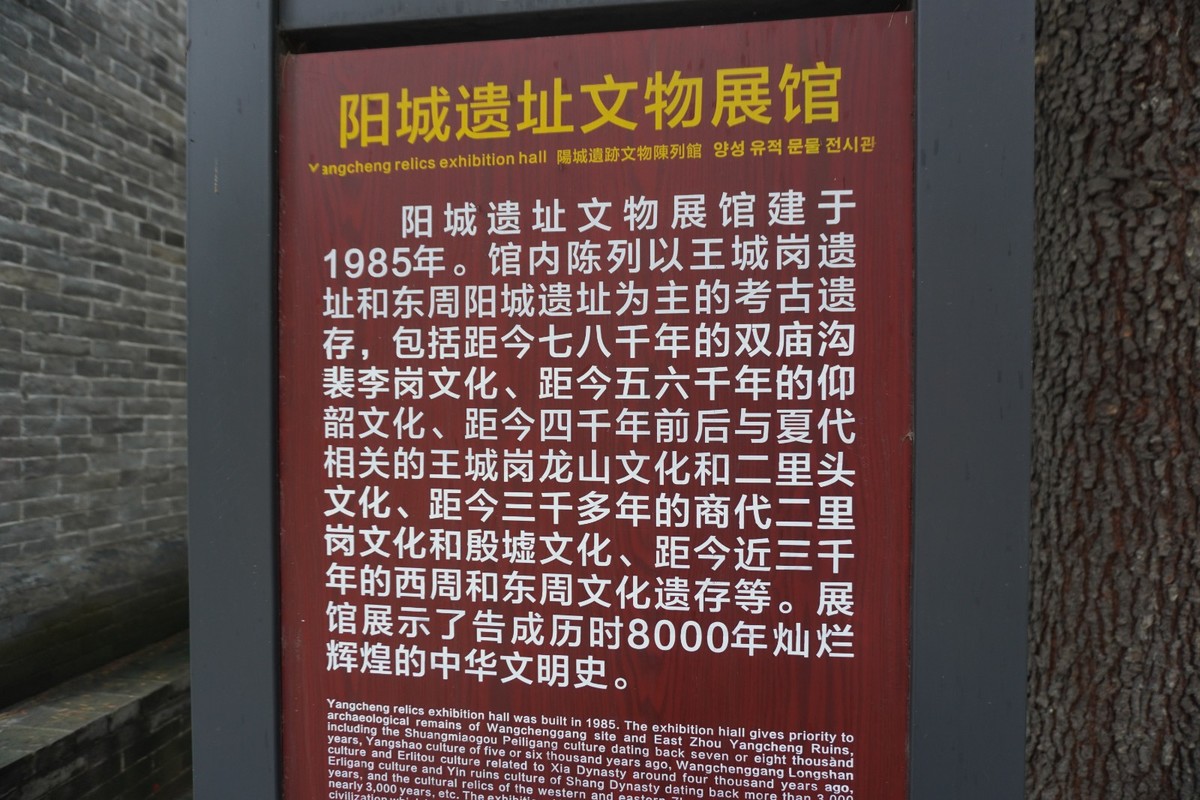
Introduction to the Yangcheng Site Cultural Relics Exhibition Hall
Historically, the residences of the three dynasties were located between the rivers and Luo, with Songshan revered as the central mountain. According to historical records and legends, the ‘Xia capital Yangcheng’ or ‘Yu’s residence Yangcheng’ is believed to be near Gaocheng Town. The Dengfeng Gaocheng area is not only home to the Duke of Zhou’s measuring platform and Guo Shoujing’s observatory but is also surrounded by the Wangchenggang site and the Yangcheng site. The Wangchenggang site is a late Longshan culture site in the Central Plains, connected to the Peiligang culture, Erlitou culture, and the remains of the Shang and Zhou dynasties, which are related to ‘Yu’s capital Yangcheng’ and ‘Gun’s city’ as documented. The Yangcheng site has unearthed pottery inscriptions such as ‘Yangcheng’ and ‘Yangcheng granary vessel,’ making it a crucial site for the study of early Xia culture.
The concept of ‘center’ has always been intrinsically linked to Henan, with terms like ‘China,’ ‘Central Plains,’ ‘Central,’ ‘Central State,’ and ‘Central Earth’ all originating from this region.
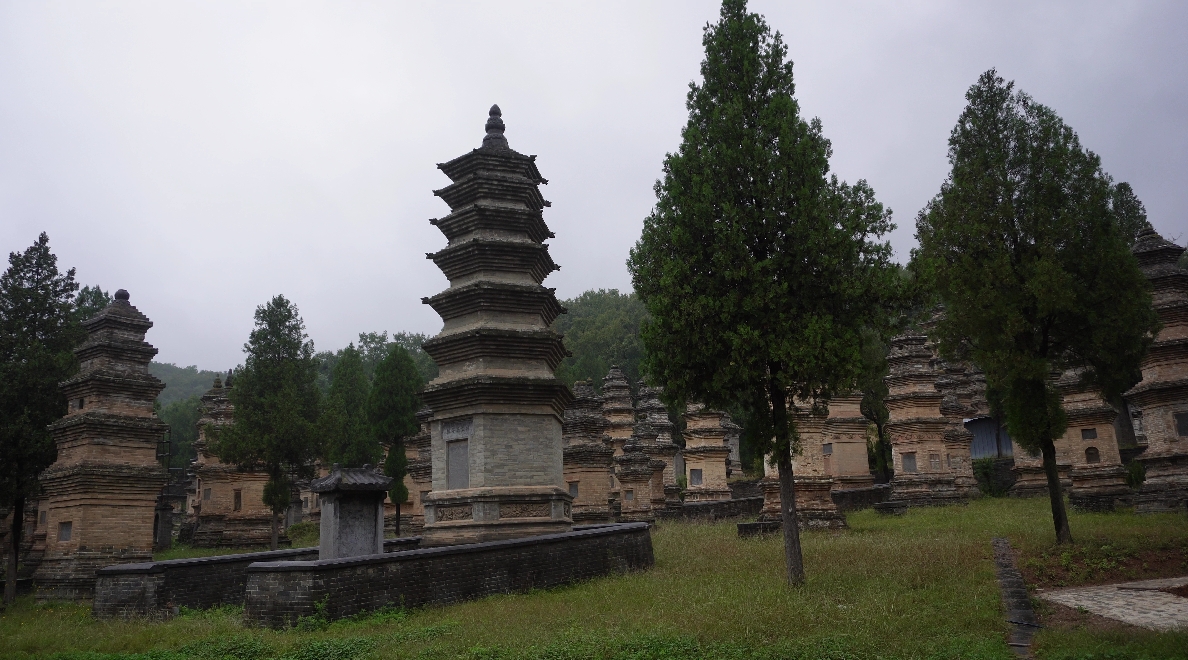
Shaolin Temple Pagoda Forest
Songshan, the epicenter of ancient Chinese heaven-worshipping and earth-sacrificing, is also the cradle of Chinese civilization. The Huaxia people have cultivated this land, creating a rich cultural heritage. The Tai Shi Que, Shao Shi Que, and Qi Mu Que, established during the Eastern Han Dynasty, are the oldest existing ceremonial relics in China. The Shaolin Temple on Songshan is the birthplace of Shaolin Kung Fu and the ancestral court of Zen Buddhism, marking it as the earliest center for the dissemination of Chinese Buddhist culture. Song Yang Academy is one of the ‘Four Great Academies’ of the Northern Song Dynasty, the birthplace and dissemination center of Cheng-Zhu Neo-Confucianism. The Observation Platform is the oldest existing astronomical observatory in China and one of the oldest in the world. The Zhou Gong’s Shadow Measuring Platform establishes Songshan’s historical status as the center of heaven and earth.
These eight historical buildings, with eleven items, serve as historical testimonies of Songshan’s role as the core of Chinese culture, showcasing the continuity, innovation, unity, inclusiveness, and peacefulness of Chinese civilization. Their unique historical, scientific, and artistic values hold an irreplaceable position in the history of Chinese civilization and, indeed, in the history of human civilization.
The ‘Center of Heaven and Earth’ is deeply rooted in Songshan.

